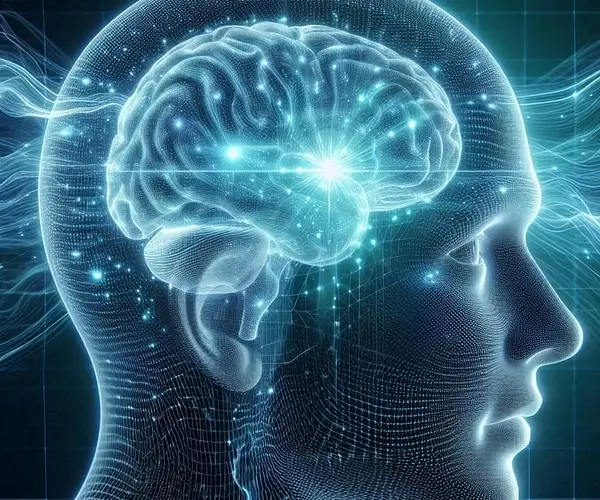Migraine is a neurological condition that can cause multiple symptoms including throbbing head pain. While there are many things experts still don’t know about migraines, research suggests that there may be a chemical or anatomical difference in migraine sufferers’ brains that make them more susceptible to certain migraine triggers. There are no blood tests for migraines. Migraines don’t cause brain abnormalities that a CT scan or an MRI can detect, although these tests are sometimes ordered to diagnose other problems that cause severe headaches.
A common symptom of migraine is a severe, incapacitating headache that may begin as a dull ache and then turn into a constant, throbbing pain felt on one side of the head and often both sides of the head in children.
Migraines affect individuals differently, with varying degrees of pain and other symptoms. Specific types of migraines are diagnosed by their symptoms. Although symptoms may vary, most migraines affect only one side of the brain therefore pain is experienced most often on one side of the head. Unlike adults, children may experience pain on both sides of the head (frontal area). Accompanying symptoms may include nausea, abdominal pain, vomiting, visual or sensory disturbances (aura), and sensitivity to light or sound. Symptoms may last 4 to 72 hours. Children often experience symptoms without head pain (abdominal pain, vertigo, dizziness, vomiting) that last for a short duration which is why migraine in children is often misdiagnosed.
Migraine is three times more common in women than in men and affects more than 10 percent of people worldwide. Migraine headaches often begin in childhood, adolescence or early adulthood. While adults typically have one-sided headaches, children often experience pain on both sides of the head, and the headaches are commonly accompanied by sensitivity to light and sound. Pediatric migraines are usually much shorter in duration than adult migraines, making them hard to treat. Sometimes the child will develop a severe headache, stomach pain or nausea, and then vomit and the episode is over. For this reason, parents and doctors alike may misdiagnose. Migraines may be chronic (daily, weekly, monthly) or episodic, such as once or twice a year.
There are 4 distinct phases or stages to a migraine: Prodromal (aka Premonitory), Aura, Pain and Postdrome.
It is during the first two phases (prodromal and aura) that you get hints that a migraine is coming, and recognizing these hints (symptoms) may give you the edge you need to fight back and either prevent the migraine entirely or decrease the severity and or duration of the pain phase (which is obviously the most debilitating and problematic).
The Prodrome Stage – About 65% of migraine sufferers experience the prodrome phase. In the prodrome stage, sufferers experience emotional or physical symptoms two hours to two days before the pain phase starts.
These symptoms can occur in migraineurs with and without aura:
- Fatigue
- Yawning
- Appetite changes
- Altered mood – depression
- Muscle Stiffness – especially in the neck
- Appetite changes
- Digestive changes – (some sufferers vomit up food they ate quite a while ago)
- Irritability
- Euphoria
- Food cravings
- Constipation
- Diarrhea
- Sensitivity to odors, noise and light
- Increased urination
Physicians who specialize in migraine treatment find that only 30% of sufferers recognize that they have one or more of the “prodrome” symptoms until they are actually told what symptoms to look for. Once informed then up to 80% of sufferers report having one or more of them.
The Aura Stage – Less than half of migraine sufferers experience the aura stage. During this stage, about one-third of patients experience visual or sensory disturbances including a few hours before the pain starts, including:
- Flashing lights, stars or sparkles of light, zig-zag lines
- Blind spots (scotomas) or colored spots
- Tunnel vision or temporary loss of sight
- Confusion
- Slurred speech / trouble speaking.
- Numbness and tingling on parts of the body (parathesias)
- Hypersensitivity to touch
The Pain Stage (Headache Attack) – The onset of the pain stage can start within minutes or sometimes hours of the commencement of the aura stage. In addition to pain, nausea, vomiting, sensitivity to light (photophobia) sound (phonophobia) and movement may also be experienced. This stage can last an hour to 1-3 days. Migraine duration is usually shorter in children.
The Postdrome Stage (Recovery) – During this stage of migraine, even though the pain is gone, some sufferers can feel exhausted, depressed and/or, residual neck pain. A mild headache may also flare up during this stage especially when bending over or moving too quickly.
WHAT IS A CHRONIC MIGRAINE?
Chronic Migraine is a condition defined as 15 or more headache days a month with each headache lasting 4 hours or more. If you experience Chronic Migraine, at least half of your headaches are migraines.
TYPES OF MIGRAINES:
Migraines without aura
Not all migraines are the same. But many people experience:
- Throbbing pain
- Sensitivity to light and/or sound
- Nausea
Classic Migraine (Migraine with Aura):

1 in 5 people who get migraines have auras. An aura is a feeling or series of sensations that come about 10 to 30 minutes before a migraine attack.
Common symptoms of aura include:
- Seeing flashing lights, zigzag lines, or blind spots
- Feeling numbness or tingling in the face or hands
- Having a disturbed sense of smell, taste, or touch
- Feeling mentally “fuzzy”
The aura may be followed by some or all of the symptoms of a migraine without aura.
BASILAR MIGRAINES – COMPLICATED MIGRAINE or (Migraine with brain-stem aura – MBA)
Basilar migraine is a rare type of complicated migraine with symptoms caused by disorders of the lower part of the brain. It’s also called Basilar-Type Migraine or Basilar Artery Migraine. This type of migraine starts in the lower part of the brain called the brain stem. Typical symptoms can include visual disturbances in both eyes (double vision), speaking difficulties, lack of coordination, tingling in the hands and feet, dizziness, vertigo, or ringing in the ears. Each of these symptoms usually only lasts up to one hour. Many symptoms may occur with anxiety and hyperventilation, which makes migraine difficult to diagnose
Who is at risk?
Early research suggested that basilar migraine was most often in young women. Recent statistical analysis has shown that the basilar migraine affects all age groups and both male and female. However, basilar migraine, like other forms of migraine is more common in women.

Dizziness can be a symptom of basilar migraine
HEMIPLEGIC MIGRAINE
Hemiplegic migraine is a rare type of headache. It’s also one of the most serious and potentially debilitating migraine headaches. Hemiplegic migraine is a severe subtype of the group/type migraine with aura, that may be accompanied by temporary paralysis or stroke like symptoms on one side of the body called hemiplegia.
It generally includes a severe headache, but not always. Before the actual headache pain, a sufferer may experience the aura phase, temporary sensory disturbances in the following areas:
- Vision
- Muscle control and body sensations
- Speech and language
- Hearing
What Are the Symptoms of Hemiplegic Migraine Headaches?
Hemiplegic migraine symptoms often start in childhood. Then for some people, they disappear in adulthood. The stroke-like symptoms can range from worrisome to debilitating. Migraines are unpredictable and unique to each person. You may have a hemiplegic migraine headache with extreme pain and minor paralysis one month. Then, the next attack might bring extreme paralysis without much headache pain at all.
Symptoms of hemiplegic migraine include:
- Severe, throbbing pain, often on one side of your head
- A pins-and-needles feeling, often moving from your hand up your arm
- Numbness on one side of your body, which can include your arm, leg, and/or one side of your face
- Weakness or paralysis on one side of your body
- Loss of balance and coordination
- Visual aura, such as seeing zigzag lines, double vision, or blind spots
- Language difficulties, such as mixing words or trouble remembering a word
- Slurred speech
- Dizziness or vertigo
- Nausea and vomiting
- Extreme sensitivity to light, sound, and smell
- Confusion
- Decreased consciousness or coma
With hemiplegic migraine, the aura can be more severe and last longer than with other types of migraine with aura. Symptoms usually last from five minutes to one hour. It’s rare, but some people gradually develop long-lasting difficulty with movement and coordination.
OPHTHALMOPLEGIC MIGRAINE
This type of migraine is a nervous system problem that affects the eyes. There may be pain surrounding the eye, droopy eyelids, or double vision. Harsh lights and screens, eyestrain, and other weakening visual activities can trigger ophthalmoplegic migraine attacks.
RETINAL (OPHTHALMIC) MIGRAINE
This migraine involves repeated attacks of black spots (scotomas) or temporary blindness in one eye, usually followed by a headache (but not always). They can start with a pattern of black spots that gradually get bigger and cause complete loss of vision in one eye. This can last 10 to 20 minutes to an hour.
VESTIBULAR MIGRAINE – The term “vestibular migraine” is not a real medical classification. A more accurate description would be migraine with vestibular symptoms. The vestibular system in the inner ear, is one that maintains balance and equilibrium. Therefore vestibular symptoms are dizziness, vertigo (a sense of spinning or motion when at rest), or loss of balance and disequilibrium. Vestibular migraine is considered one of the most common causes of recurrent spontaneous vertigo attacks. Because of the broad spectrum of symptoms with or without headache, it is not always a clear-cut diagnosis and experts believe vestibular migraine is often underdiagnosed.
MENSTRUAL MIGRAINE – This term refers to migraine attacks that occur just before, during or after a woman’s monthly menstrual cycle. There are two subtypes of menstrual migraine: Pure Menstrual Migraine (PMM), and Menstrually Related Migraine (MRM). Women with PMM have exclusively perimenstrual attacks (occur at the time of menstruation), while women with MRM have additional non-menstrual attacks throughout the menstrual cycle.
ABDOMINAL MIGRAINE
Abdominal migraine is one of the most common causes of abdominal pain in children and can also occur in teens and adults. Although the pain will come and go, it is severely debilitating during a migraine episode, is very distressing for children. Recurring abdominal pain can have a drastic effect on a child’s overall quality of life and school performance.
Abdominal pain in childhood accounts for 2-4% of office visits to the doctor and 50% of referrals to pediatric gastroenterologists. Even though it is a well recognized type of pediatric migraine with specific diagnostic criteria under the International Classification of Headache Disorders, it is often underdiagnosed by both pediatricians and pediatric gastroenterologists. The diagnosis of abdominal migraine is much more prevalent in Europe than in the United States. In the U.S. it is often misdiagnosed as doctors are still struggling to understand it. Many doctors can only make an accurate diagnosis years after the abdominal migraines when the child becomes a teen and then develops classic migraines. Parents should be extra cautious as children could be subjected to unnecessary surgery if the condition is misdiagnosed. Children with a family history of migraine are at higher risk for abdominal migraines, including children who experience motion sickness. It is more prevalent in girls than in boys. The triggers for abdominal migraines are similar to the things that trigger normal migraines. Abdominal migraines are diagnosed in children and adults who meet these criteria:
- At least five attacks of abdominal pain that each last 1 to 72 hours
- Dull pain around the belly button, moderate to severe in intensity
- At least two of these symptoms: appetite loss, nausea, vomiting, pale skin
- Other abdominal migraine symptoms may include, headache and sensitivity to light and sound.
Abdominal migraines usually follow a pattern, same type of appearance, same time of day, and same duration with the symptoms going away completely between migraines. Doctors may use ultrasound or endoscopy to check for other potential causes of stomach pain and evaluate a patient’s medical history to determine a pattern.
Who gets migraine attacks?
Migraine can happen to anyone at any age.
- Nearly 1 in 4 U.S. households includes someone with migraine.
- 12% of the population – including children – suffers from migraine.
- 18% of American women, 6% of men, and 10% of children experience migraines.
- Migraine tends to run in families. About 90% of migraine sufferers have a family history of migraine.
- A child who has one parent with migraine has a 50% chance of inheriting it and if both parents have migraine, the chances rise to 75%.
Migraine remains undiagnosed and undertreated in at least 50% of patients, and less than 50% of migraine sufferers consult a physician. This disorder can be debilitating and interfere with all aspects of life, especially for chronic migraine sufferers. Unless you know the symptoms, migraines may be difficult to diagnose, especially in children. If you suspect you or a loved one is experiencing migraines, keep track of what triggers those symptoms, what makes them better and what makes them worse. You can share those details with a physician for a proper diagnosis and implement a migraine prevention and migraine relief regimen.


